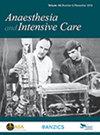Simulated impact of lift car sizes on transport of critical care patients: Informing the design of the New Dunedin Hospital
IF 1.2
4区 医学
Q3 ANESTHESIOLOGY
引用次数: 0
Abstract
The New Dunedin Hospital (NDH) is New Zealand’s largest health infrastructure build. Here we describe the use of a simple simulation-based hospital design exercise to inform the appropriate lift car size for critical care intrahospital transfers in the NDH. The intensive care unit (ICU) user group tested a series of entries and exits of simulated complex patient transfers in mocked-up lift cars of three different dimensions. Time taken to enter and exit the lift were recorded, reflecting the relative difficulty of transfer. Qualitative assessments were made of ease and perceived safety of transfer. These simulations demonstrated that recommended standard patient lift cars, often proposed for critical care transfers, could not physically accommodate all complex ICU transfers. A size of 1800 mm wide (W) × 3000 mm deep (D) had the physical capacity to permit all simulated ICU transfers, but with staff and patient risk. As lift car size increased to 2200 mm W × 3300 mm D, the simulation demonstrated reduced transfer times, smoother entry and exit, improved access to the head end of the bed, and reduced risk of disconnection or dislodgement of lines and airway support. The resultant clinical recommendations for the dimensions of a critical care lift car surpass current international health architecture guidelines and may help to inform future updates. The NDH project benefited from an objective assessment of risk, in language familiar to clinicians and healthcare architects. The outcome was an upsizing of the two ICU-capable lifts.模拟电梯轿厢尺寸对运送危重病人的影响:为新达尼丁医院的设计提供依据
新达尼丁医院(NDH)是新西兰最大的医疗基础设施。在此,我们介绍了如何通过简单的模拟医院设计来确定 NDH 重症监护院内转运所需的电梯轿厢尺寸。重症监护室(ICU)用户组在三种不同尺寸的模拟移位机车中测试了一系列复杂病人转运的模拟出入口。记录了进入和离开移位机所需的时间,以反映移位的相对难度。对转运的难易程度和安全感进行了定性评估。这些模拟结果表明,通常建议用于重症监护转运的标准病人移位机车无法满足所有复杂的重症监护室转运需求。1800 毫米宽(W)×3000 毫米深(D)的尺寸在物理上能够容纳所有模拟 ICU 转运,但会给工作人员和病人带来风险。当移位机轿厢尺寸增加到 2200 毫米宽 × 3300 毫米深时,模拟结果表明移位时间缩短、进出更顺畅、床头通道更通畅、管路和气道支持断开或脱落的风险降低。由此产生的关于重症监护移位机尺寸的临床建议超过了当前的国际健康建筑指南,可能有助于为未来的更新提供参考。用临床医生和医疗建筑师熟悉的语言对风险进行客观评估,使 NDH 项目受益匪浅。其结果是扩大了两台可用于重症监护室的升降机的尺寸。
本文章由计算机程序翻译,如有差异,请以英文原文为准。
求助全文
约1分钟内获得全文
求助全文
来源期刊
CiteScore
2.70
自引率
13.30%
发文量
150
审稿时长
3 months
期刊介绍:
Anaesthesia and Intensive Care is an international journal publishing timely, peer reviewed articles that have educational value and scientific merit for clinicians and researchers associated with anaesthesia, intensive care medicine, and pain medicine.

 求助内容:
求助内容: 应助结果提醒方式:
应助结果提醒方式:


